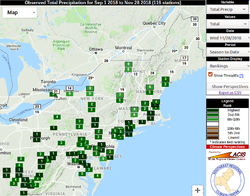rawlins02
Member
This map shows ranks for total precipitation since September 1 across the Northeast US. Meteorological fall ends tomorrow. The 1s mean wettest on record, 2s second wettest, etc. November ranks are even more impressive. Have to believe this has had an impact, on wood stacks, basements, septic tanks, etc.



